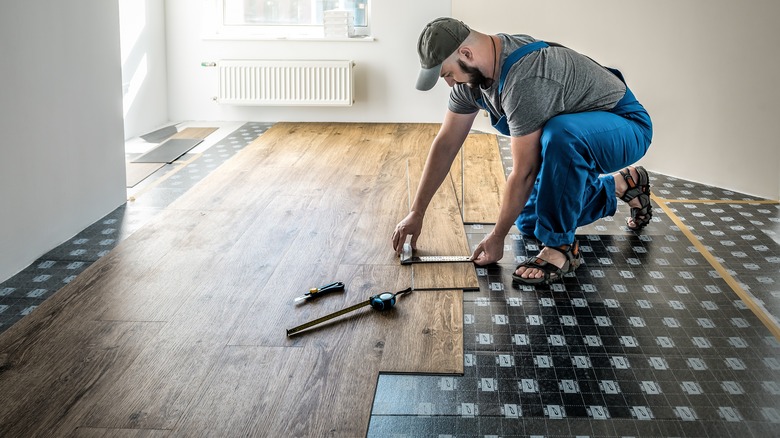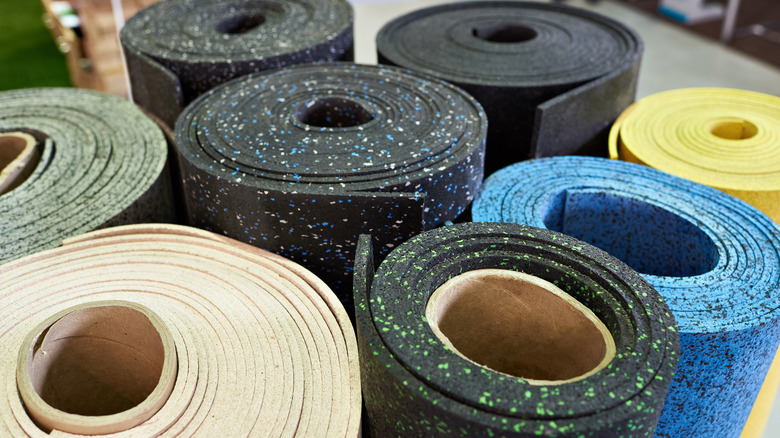The Best Type Of Backing To Look For When Choosing Vinyl Flooring
Vinyl flooring is a fantastic way to give any room in your home a makeover with minimal hassle. Due to its affordability, it's especially great for those looking to update their home on a budget. Before installing your new floors, though, you should put down a backing. While there are a number of options on the market, rubber is among the best backings for vinyl floors due to its durability.
A backing—or underlayment—is the layer that goes between your vinyl flooring and the original floor. Unless you're installing over existing vinyl or your new floor comes with an attached backing, you don't want to skip using underlayment, as it will enhance your floors' comfort, durability, and more. Although you can find backings made of materials like cork and foam, rubber is a long-lasting option that provides valuable sound and shock absorption.
This absorption will make your room quieter and your floors more comfortable. Think about how bothersome it would be to walk on a hard subfloor, like concrete, without any additional support. Furthermore, rubber underlayment is especially effective at adding warmth to your floors and protecting against water damage. Additionally, because rubber is elastic and durable, it tends to stand up to wear better and will help prevent your vinyl flooring from bending or sagging over time.
Installing your backing and vinyl flooring
As a relatively DIY-friendly project, vinyl flooring is appealing to many people, although there are still common mistakes you want to avoid when installing it. Luckily, installing backing is also pretty easy to do on your own. To start, you want to thoroughly clean your existing floor, as any debris could cause problems once you try laying down your vinyl. Afterward, lay out your backing and ensure you line up its edges against your wall. Do this until your entire floor is covered, and use a utility knife to cut around any obstacles.
In the case of rubber, you'll most likely purchase backing in rolls, making the job even simpler. However, keep in mind that if you're installing vinyl over concrete, you want to add a vapor barrier under your backing. Concrete often has extra moisture seepage that even rubber backing may be unable to handle. Depending on manufacturers' instructions, you may also need to use an adhesive on your backing, or you can lay it down dry.
Once your backing is installed, you can lay your vinyl on top. If you haven't done so before, make sure to follow these tips for a flawless vinyl flooring installation. With that and proper backing, you'll have a new look for your home that can be enjoyed for years to come.

